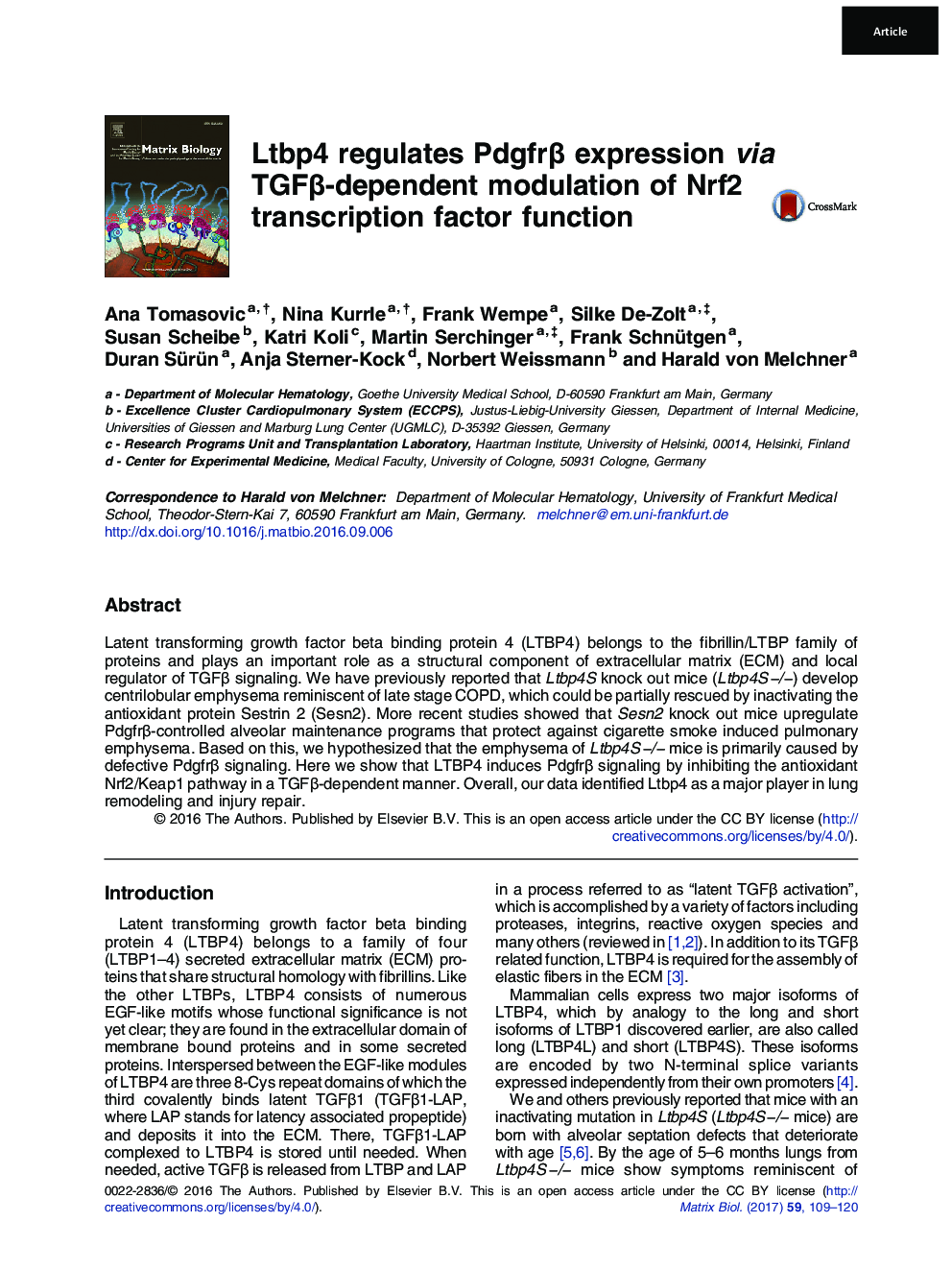| Article ID | Journal | Published Year | Pages | File Type |
|---|---|---|---|---|
| 5528511 | Matrix Biology | 2017 | 12 Pages |
â¢Ltbp4S knock out mice develop centrilobular emphysema reminiscent of late stage COPD.â¢Ltbp4S induces Pdgfrβ signaling by inhibiting the antioxidant Nrf2/Keap1 pathway in a TGFβ-dependent manner.â¢Pdgfrβ promotes lung regeneration and injury repairâ¢Loss of Ltbp4 upregulates the Sesn2/PDGFRβ suppressor pathway which is overexpressed in lungs of individuals with COPDâ¢As a major player in lung remodeling, Ltbp4S is likely involved in the pathogenesis of COPD.
Latent transforming growth factor beta binding protein 4 (LTBP4) belongs to the fibrillin/LTBP family of proteins and plays an important role as a structural component of extracellular matrix (ECM) and local regulator of TGFβ signaling. We have previously reported that Ltbp4S knock out mice (Ltbp4S â/â) develop centrilobular emphysema reminiscent of late stage COPD, which could be partially rescued by inactivating the antioxidant protein Sestrin 2 (Sesn2). More recent studies showed that Sesn2 knock out mice upregulate Pdgfrβ-controlled alveolar maintenance programs that protect against cigarette smoke induced pulmonary emphysema. Based on this, we hypothesized that the emphysema of Ltbp4S â/â mice is primarily caused by defective Pdgfrβ signaling. Here we show that LTBP4 induces Pdgfrβ signaling by inhibiting the antioxidant Nrf2/Keap1 pathway in a TGFβ-dependent manner. Overall, our data identified Ltbp4 as a major player in lung remodeling and injury repair.
